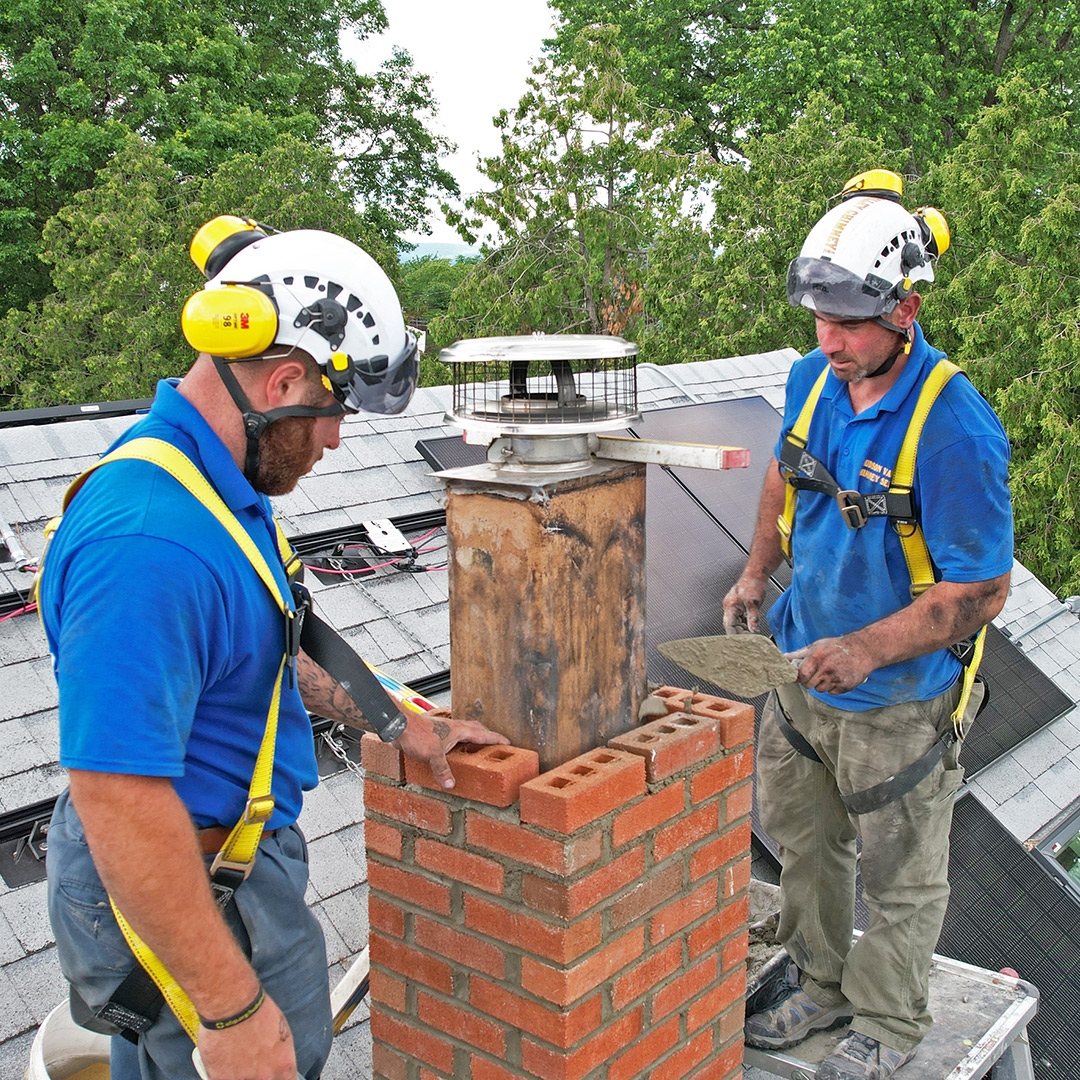Trustworthy Chimney Services: Maintenance and Fix Done Right
Trustworthy Chimney Services: Maintenance and Fix Done Right
Blog Article
Opening the Secrets of Sustainable Stonework Building Practices for Eco-Friendly Structures
In the world of contemporary building, the pursuit of sustainable methods has come to be paramount. Among the myriad methods to eco-friendly structure, sustainable stonework construction sticks out as a time-tested and long lasting method that holds a wealth of untapped potential. From the choice of products to ingenious construction methods, the keys to accomplishing sustainability within stonework building are diverse and appealing. By checking out the benefits, materials, methods, and future patterns of lasting masonry, a much deeper understanding of how these methods can form the future of eco-friendly structures arises.
Advantages of Lasting Stonework Building
Embracing lasting masonry building techniques not just reduces environmental impact but also supplies long-lasting financial benefits to home builders and communities. By making use of products like recycled bricks, blocks, and stones, builders can substantially reduce the carbon footprint of their projects while promoting source effectiveness. In addition, sustainable masonry construction methods, such as appropriate insulation and thermal mass residential properties, can improve energy performance within buildings, leading to lowered functional expenses in time.
Additionally, the durability and strength of stonework structures add to long-term financial advantages. Structures constructed making use of sustainable stonework practices frequently need much less repair and maintenance, equating to cost savings for home builders and residential property owners. The long life of masonry products additionally ensures that structures stay secure and safe, lowering the demand for constant improvements or replacements.
Eco-Friendly Masonry Materials
Making use of green masonry materials is a pivotal action towards boosting the sustainability of building and construction practices and reducing ecological impact while taking full advantage of long-lasting financial advantages. Sustainable stonework materials are sourced, created, and utilized in a way that reduces total environmental influence. Products such as recycled blocks, redeemed stone, and sustainable cinder block are coming to be increasingly preferred options for eco-conscious builders. Recycled bricks, as an example, not only divert waste from landfills but additionally require much less energy to create contrasted to new blocks. Redeemed stone uses an one-of-a-kind visual appeal while reducing the demand for brand-new quarrying. Lasting concrete obstructs integrate recycled aggregates and may feature improved insulation residential properties, contributing to power performance in buildings.
Furthermore, all-natural products like adobe, rammed planet, and straw bundles give exceptional thermal mass residential properties, lowering the need for heating and cooling down energy. These materials are typically locally readily available, promoting local economic climates and decreasing transportation-related carbon exhausts. By selecting environmentally friendly stonework products, building and construction tasks can dramatically reduce their environmental impact and add to the development of much healthier, a lot more sustainable constructed environments.
Energy-Efficient Masonry Techniques
Energy effectiveness plays an essential duty in have a peek at this website enhancing the sustainability of stonework building techniques. By carrying out energy-efficient masonry methods, builders can considerably decrease the general power usage of a structure, resulting in reduced operational prices and see a smaller environmental footprint. One key energy-efficient masonry strategy is the use of thermal mass, which entails integrating thick materials like concrete or block into the structure's structure to take in and save warm. This aids manage interior temperatures, decreasing the demand for mechanical heating and cooling down systems.

Developments in Lasting Stonework
Current improvements in lasting masonry practices have caused innovative methods that are improving the building sector. One such development is the advancement of self-healing concrete, which utilizes microorganisms installed within the concrete to heal splits autonomously. This development not just minimizes upkeep expenses but additionally enhances the toughness of stonework frameworks, adding to their sustainability.
One more notable advancement is using recycled aggregates in masonry construction - masonry contractor. By including products such as crushed ceramic waste or recycled glass into concrete blends, builders can minimize the environmental effect of construction tasks while maintaining architectural stability. This technique not only diverts news waste from landfills but additionally conserves natural deposits, making it a crucial advancement in sustainable masonry building
Furthermore, the assimilation of digital style tools, such as Building Information Modeling (BIM), is reinventing the way stonework frameworks are planned and built. BIM enables even more specific computations, decreased material waste, and enhanced energy effectiveness, inevitably leading to more sustainable structure practices. These advancements jointly symbolize an appealing future for sustainable masonry building and construction in the period of eco-friendly structures.
Future Trends in Stonework Sustainability
With the cutting-edge strides made in sustainable masonry techniques, the future patterns in stonework sustainability are poised to more revolutionize the building and construction sector. Among the essential trends forming the future of stonework sustainability is the increased assimilation of innovation. Developments such as Building Details Modeling (BIM) and virtual reality simulations are being used to optimize stonework building and construction processes, bring about lowered product waste and enhanced energy efficiency in buildings.
Additionally, the advancement of novel lasting products is readied to play a considerable duty in enhancing the eco-friendliness of masonry building. masonry contractor. Technologies like self-healing concrete, recycled aggregates, and bio-based binders are acquiring traction for their ability to lessen environmental influence while keeping architectural honesty

Final Thought
In conclusion, lasting stonework building and construction techniques provide many advantages for environment-friendly buildings. masonry contractor. Developments in lasting stonework are continuously being developed to better improve the environmental performance of buildings.
Report this page